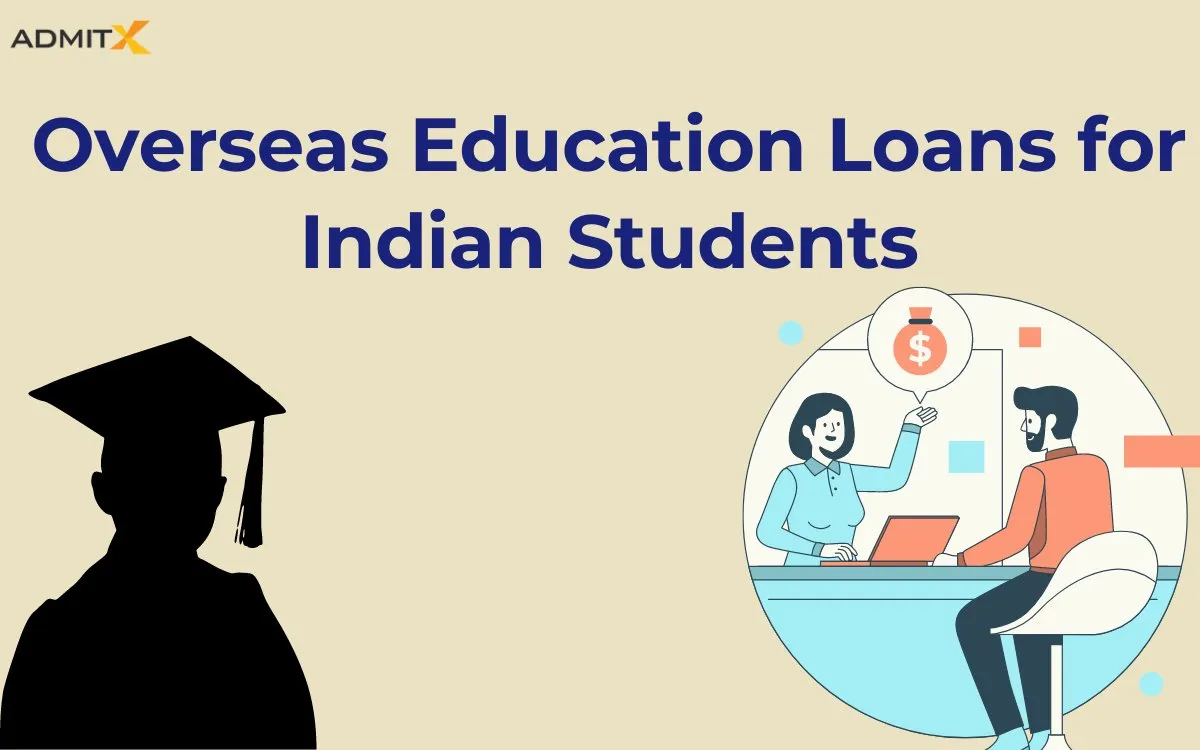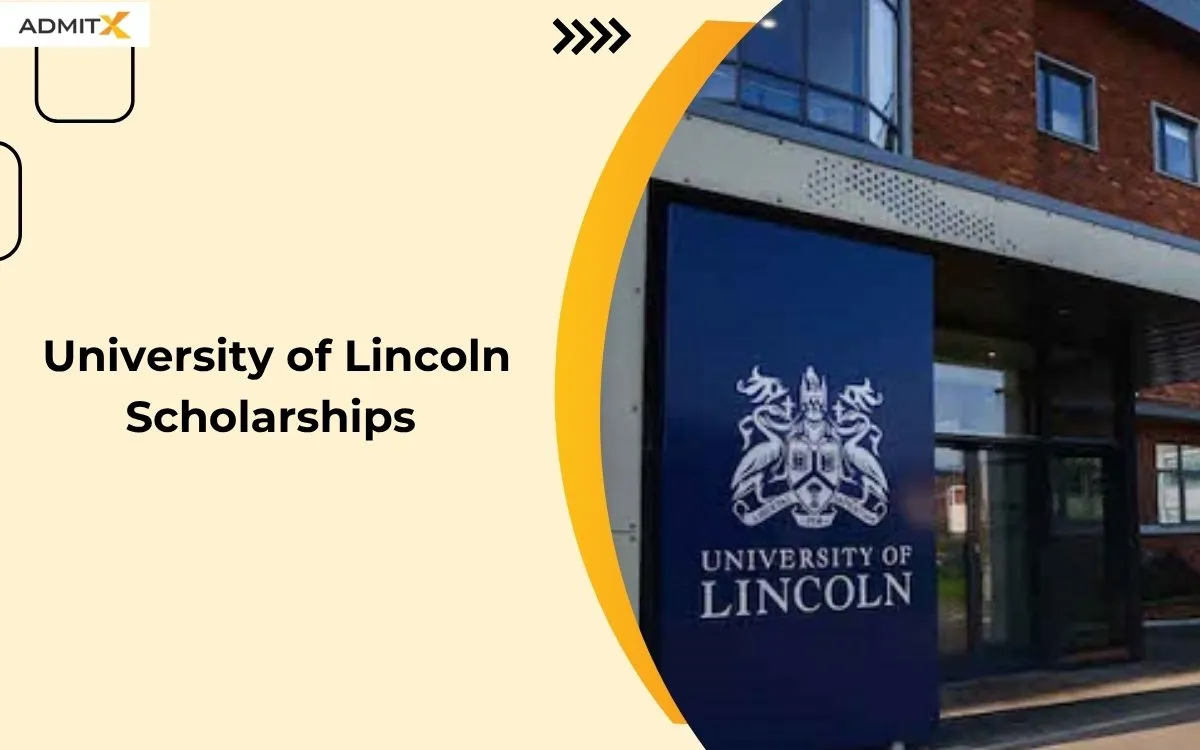
Overseas Education Loans for Indian Students: Interest Rates, Top Lenders & More
Studying abroad is one of the most crucial steps that only some take. However, once taken, it provided abundant opportunities to explore oneself and the whole globe. The decision to study in foreign countries comes with many challenges, like financial burdens, which need to be addressed appropriately. In recent years, the trend to opt for education loans for studies abroad has grown in India. This is due to the increased awareness of its prevalent advantages.
In the blog, we have provided in-depth information on education loans, their types, eligibility criteria, application processes, and much more.
- What is an Education Loan?
- Why Get an Education Loan?
- Types of Student Loans for Studying Abroad
- Features of Education Loan in India
- Popular Lenders in India
- List of Expenses Covered in Education Loan
- Eligibility Criteria for Education Loan
- Documents Required for Student Loan in India
- Education Loan - Application Process
- Loan Processing Time on Vidya Lakshmi Portal
- Interest Rates of Different Lenders for Education Loans in 2024
- Conclusion
- FAQs
What is an Education Loan?
An education loan, sometimes known as a student loan, is a fixed amount of money borrowed to finance higher education. It is often required when the actual study costs exceed the total budget that a student can afford. The study cost includes tuition fees and other associated fees such as books, stationery supplies, etc. Apart from study costs, education loans also help students afford their living expenses without any worry.
Studying abroad is a crucial step in a student’s life since it involves pursuing higher education in a country with a culture and atmosphere different from India. Below, we have mentioned the reasons why availing of an education loan for studies abroad is essential for students.
Why Get an Education Loan?
The presence of world-class universities, availability of desired study programs, and opportunities to explore the world stimulate young minds to come out of their comfort zone and opt to study abroad. However, this also requires preparation and meeting specific requirements, which we discussed earlier in our previous blogs. There may be times when the family’s income and resources are insufficient to cover the cost of the student’s education. Lenders, NBFCs or other financial organisations can be approached for a student loan in such cases. Availing of an education loan can provide several benefits as follows:
- It eases the financial burden on the students and their families to handle the study costs in foreign countries.
- It also offers long-term tax benefits and saving options. Under the Income Tax Act 1961 and section 87A, the interest on an education loan is eligible for a tax rebate.
- It reduces the strain on family and personal savings by eliminating the necessity of using mutual funds, investments, or bonds for the same.
- If loan repayment is done on time, it starts building the students’ good credit history, which can be required to obtain any other type of loan in the future.
- Repayment of the education loan can be made in EMIs once the study program is completed. This allows students to focus on their studies without any stress.
Types of Student Loans for Studying Abroad
There are many different types of education loans available in India. However, it is necessary to understand the needs and financial situation to choose the best kind of student loan for studying abroad. Below, we have discussed the types of education loans for abroad studies:
Collateral Education Loans
Often known as loans against assets/securities or deposits, these types of loans are granted to Indian students when their family pledges collateral to a lender. Lenders provide attractive interest rates on loans with collateral because these are considered secured loans.
This collateral includes:
- Property (A house, flat, land, or agricultural land)
- Deposits (fixed deposits, recurring deposits, or any other type of deposit)
- Securities (debentures, bonds, equity shares)
Non-Collateral Education Loans
Non-collateral education loans for abroad studies can be considered the best form of loan that a student can afford because they do not require lending any property or assets. Students only need to showcase their academic record, the course they want to study, and future job prospects. Also, a co-signer or co-applicant is required in most of the cases.
Third Party or Guarantee
A third party or guarantee is someone who could be a student’s friend or close relative and can assure the bank or other lenders to repay the loan if the student is not able to do so.
Let’s understand the difference between the collateral and non-collateral types of student loans for studying abroad in the tabulated form:
| Aspect | Collateral Loan | Non-Collateral Loan |
|---|---|---|
| Collateral | Requires some assets like property or deposits | Doesn’t require pledging any type of asset |
| Loan Amount | Offers higher loan amounts due to the presence of security | Provides loans at a lower maximum limit |
| Interest Rate | Lower interest rates | Higher interest rates |
| Approval Process | Complex process since it involves the evaluation of the assets | Faster processing and approval |
Also read – Ways to Fund your Overseas Education
Features of Education Loan in India
Education loans for abroad studies are quite feasible to apply for since every bank and other lender understands the necessities of the students; they keep their policies and regulations mild so that genuine requirements can be met without any obstruction. Following are some of the top features of education loans in India:
- Lenders grant student loans for studying abroad up to 1,50,00,000 INR (One crore fifty lakhs), depending on the student’s requirements.
- The interest rate in Indian banks on which education loans are granted ranges from 8% to 13% per annum, depending on the scheme and loan amount.
- The repayment of the education loan started 6-12 months after the completion of the course.
- Although an education loan can cover 100% of a student’s financial necessities, a margin between 0% and 15% is applicable under some circumstances.
- The loan tenure may vary depending on the lender and loan amount.
Popular Lenders in India
Following is a list of some of the top and popular lenders in India that grant education loans to students. Since they have had credibility and trustworthiness for several years, most students prefer these institutions when making their decision to opt for an education loan.
Public Sector Lenders
We have tabulated the popular public sector institutions of India along with the interest rates on which they offer education loans.
| Lenders | Maximum Loan Amount (INR) | Interest Rate (per year) |
|---|---|---|
| State Bank of India | Upto 1.5 Crore | 8.00% - 10.85% |
| Canara Bank | Upto 1 Crore | 8.25% -10.50% |
| Punjab National Bank | Upto 1 Crore | 9.50% - 11.75% |
| Bank of India | Upto 40 Lakhs | 8.00% -9.25% |
| Indian Bank | Upto 90 Lakhs | 8.50% - 10.00% |
Private Sector Lenders
We have tabulated the popular private sector institutions of India along with the interest rates on which they offer education loans.
| Lenders | Interest Rate |
|---|---|
| Axis Bank | 9.15% - 14.15% |
| Kotak Mahindra Bank | 9.00% - 13.00% |
| IDBI Bank | 9.00% - 14.00% |
| ICICI Bank | 9.00% - 14.00% |
| Induslnd Bank | 10.14% - 14.50% |
Non-Banking Financial Corporations (NBFCs)
We have tabulated the popular NBFCs along with the interest rates on which they offer education loans to students in India.
| Lenders | Interest Rate |
|---|---|
| Avanse | 12.50% - 13.50% |
| HDFC Credila | 10.50% - 14.00% |
| Auxilo | 11.50% - 13.50% |
| Incred | 9.50% - 14.50% |
| Eduvanz | 9.00% - 15.00% |
List of Expenses Covered in Education Loan
The following expenses are covered under the collateral education loan:
- Tuition Fees
- Accommodation rent
- Travel expenses
- Insurance premiums
- Cost of books and other stationary items
- Cost of laboratory equipment
- Library charges
- Cost of computer or laptop required for academic study, etc.
Eligibility Criteria for Education Loan
Irrespective of the type of education loan, lender, and loan amount, the eligibility criteria to get a student loan for studying abroad do not vary much. Below, we have mentioned the eligibility criteria required for Indian students to apply for an education loan:
- The borrower/applicant must be an Indian citizen.
- The co-borrower/co-applicant must be an Indian citizen.
- The minimum age to apply for an education loan should be at least 16 years.
- The applicant’s previous academic record should be proven good.
- In case the applicant opts for a collateral loan, they must have relevant assets to offer (as listed in the lender’s requirement letter).
- Co-borrower(s) must have an account in any bank in India.
- The applicant must have completed their high school and intermediate study (10+2 level/diploma) in any government-recognized school.
- The applicant must present a letter of acceptance from a reputable overseas college/university.
- The applicant’s chosen course must be technical or professional and provide job aspects after the completion of studies.
Documents Required for Student Loan in India
Below, we have listed the required documents for applying for an education loan:
For Applicant (Student)
- Fully completed and signed loan application form
- Two passport-size photographs
- Photo ID card (Aadhar card/Voter ID card/Passport/PAN Card, etc.)
- Residence Proof (Passport/Voter ID card/Aadhar card)
- Previous academic documents (mark sheets, transcripts, and certificates)
- Certificate of participation or achievement in extra-curricular activities
- Language proficiency certificates (TOEFL/IELTS/Duolingo etc.)
- Standardised test certificates (college/university entrance tests such as SAT/ACT and GMAT/GRE)
- Proof of Admission (Admission letter or letter of acceptance from the foreign institute on its letterhead with address)
- College and course’s prospectus
- Statement of cost of study/schedule of expenses
For Co-Applicant
A co-applicant can be a student’s father, mother, brother, sister, spouse (husband/wife), grandparent, parents-in-law, or maternal/paternal uncle.
- Two passport-size photographs
- Photo ID card (Aadhar card/Voter ID card/Passport/PAN Card, etc.)
- Residence Proof (Passport/Voter ID card/Aadhar card)
- Last 6-8 months bank statements
- Income proof of co-applicant
In the case of Salaried Employees
- Latest 3 months’ salary slips or salary certificate on Employer’s Letterhead
- Last two year’s Form-16 from employer or last 2 year’s Income Tax Returns
In the case of Self-Employed
- Last 2 year’s Income Tax Returns
- Last 2 year’s certified financial statements or provisional financial statements duly certified by CA.
- Proof of office (any one of the following: lease deed, utility bill, title deed, etc.)
On Lending Collateral or Immovable Property
The following requirements should be made if a house/flat/agricultural land is pledging for collateral loan:
- Property title deed
- 7 / 12 extracts in case of land
- Registered sale agreement along with society share certificate
- Original registration receipt for the above agreement
- Allotment letters by Municipal Corporations/authorised government authorities Like MHADA, CIDCO, etc.
- The previous chain of sale deed establishing the title
- The latest maintenance bill, along with receipts issued by the builder/ society,
- Latest property tax bill, along with receipts,
- NOC for the mortgage from society/builder,
- Approved building plan
- Encumbrance certificates as on date, etc.
Education Loan – Application Process
The application process for the overseas education loan can be made in the following ways:
- By visiting the Bank branch
- By visiting the Bank’s website
- Vidya Laxmi Portal
If a student wants to apply for an overseas education loan offline, they must visit their nearest bank branch with all the required documents, accompanied by co-applicant(s).
Below, we have provided the step-by-step details of the online application process for overseas education loans.
Application on the Bank’s Website
- Log on to the bank’s official website.
- Go to the ‘loan application portal’.
- Fill out all the necessary fields such as personal details, co-applicant details, academic details, estimation of study expenses, etc.
- Upload the required documents and click on ‘review.’
- After reviewing, click on ‘submit.’
After the successful application submission, the lender will take around 15-20 days to process the application and disburse the amount.
Application on the Vidya Lakshmi Portal
The Government of India has launched the Vidya Lakshmi Portal, where students can check, apply, and track the status of their loan application. It is the unified platform that brings all lenders and loan-providing authorities together under one umbrella. This facilitates students to browse and compare different types of education loans which are available for overseas education.
Following are the steps to navigate through the application portal:
- Create an account on the portal by visiting the official website of Vidya Lakshmi Portal
- Enter the credentials and activate the account.
- After successful activation, login into the portal
- Here, you will also explore the A-Z series of lenders and all types of educational loans that they offer.
- Now, to proceed with the application process, click on ‘loan application form.’
- Fill in all the mandatory fields, such as:
- Basic information
- Personal information
- Present banker details
- Course details
- Cost of finance details
Now, upload the required documents and click on ‘save.’
Loan Processing Time on Vidya Lakshmi Portal
- After completing the application process on the Vidya Lakshmi Portal, the bank will start verifying the details.
- The applicant and co-applicant may be required to present themselves in the bank for verification purposes.
- The bank may also require them to submit some other documents, such as a visa approval letter, a copy of health and travel insurance, etc.
- The bank will take less than 30 days to process and approve the education loan.
- Once approved or rejected (depending on the lender), the applicant will be informed about the decision through an appropriate platform.
Interest Rates of Different Lenders for Education Loans in 2024
Below, we have tabulated the current interest rates of top Indian lenders for education loans.
| Bank | Interest Rate (per annum) |
|---|---|
| ICICI Bank | 9.00% - 14.00% |
| State Bank of India | 9.15% - 11.15% |
| Union Bank of India | 10.85% - 12.15% |
| Axis Bank | 9.99% - 10.50% |
| Punjab National Bank | 9.50% - 12.75% |
| Bank of Baroda | 8.15% - 9.95% |
| Indian Bank | 8.50% - 12.50% |
| HDFC Bank | 9.00% - 14.00% |
Conclusion
To sum up, the education loan facilitates students’ admission to their desired courses and universities outside India. An education loan covers expenses like total study costs, e.g., tuition fees, library fees, lab fees, and other inclusive study expenses. In India, getting an overseas education loan is relatively easy, provided that all the requirements are fulfilled. Generally, the repayment of an education loan can be made after the course completion; sometimes, the period might be extended to 5-7 years, depending on the lender and type of loan.
FAQs
Can an education loan be taken twice?
Yes, however, it can be taken twice or more, depending on the terms and conditions of the bank and other lenders and the borrower’s eligibility criteria. Previous academic records and CIBIL scores are some other factors that are usually taken into consideration before granting a second or more education loan.
How does repayment of an education loan work?
Repayment of the education loan generally starts after the moratorium period. The moratorium period is the period between the date of course completion and securing a job, which varies from 6 months to 1 year. The repayment would start once this period is over.
What is the advantage of repaying an education loan on time?
Repayment of an education loan on time ensures that you have a good CIBIL score, which is required to get any other type of loan in the future. A good CIBIL score increases the chance of getting a higher loan amount at a low interest rate.
If you are an aspirant looking to study at your dream university, book an appointment with AdmitX today and start your applications early to avail yourself of all the benefits.









